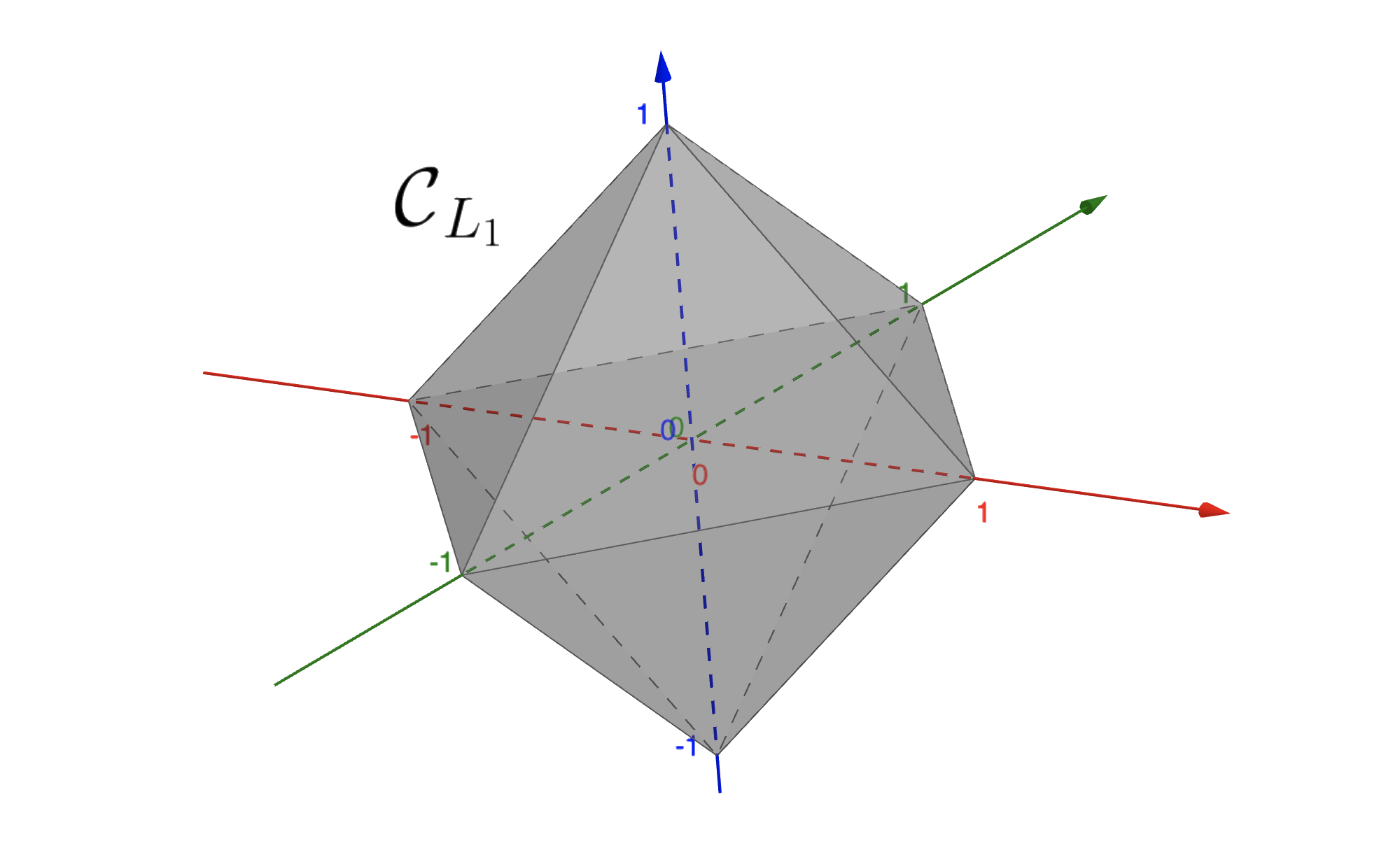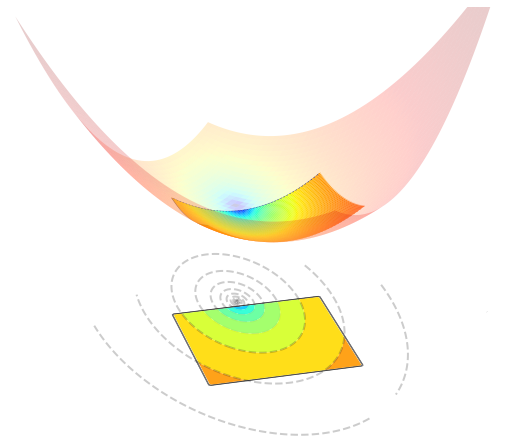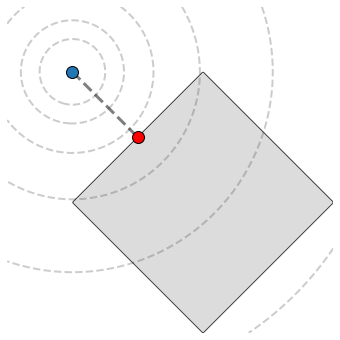5.4.5. L1-ball#
For a given scalar \(\xi\ge0\), the L1-ball is a linear constraint defined as
where \(\|{\bf w}\|_1 = |w_1|+\dots+|w_N|\) is the L1-norm. The condition \(\xi \ge 0\) is required for this subset to be nonempty. The figure below shows how this constraint looks like in \(\mathbb{R}^{2}\) or in \(\mathbb{R}^{3}\).


5.4.5.1. Constrained optimization#
Optimizing a function \(J({\bf w})\) subject to the L1-ball constraint can be expressed as
The figure below visualizes such an optimization problem in \(\mathbb{R}^{2}\).

5.4.5.2. Orthogonal projection#
The projection of a point \({\bf u}\in\mathbb{R}^{N}\) onto the L1-ball is the (unique) solution to the following problem
The solution can be computed as follows.
Projection onto the L1-ball
Note: \({\rm sign}\), \({\rm abs}\), \(\circ\) are element-wise operations.
The next figure visualizes a point \({\bf u}\in \mathbb{R}^{2}\) (blue dot) along with its projection (red dot) onto this set.

5.4.5.3. Implementation#
The python implementation is given below.
def project_l1ball(u, bound):
assert bound >= 0, "The bound must be non-negative"
if np.abs(u).sum() <= bound:
p = u
else:
p = np.sign(u) * project_simplex(np.abs(u), bound)
return p
Here is an example of use.
u = np.array([-1, 1])
p = project_l1ball(u, bound=1)
